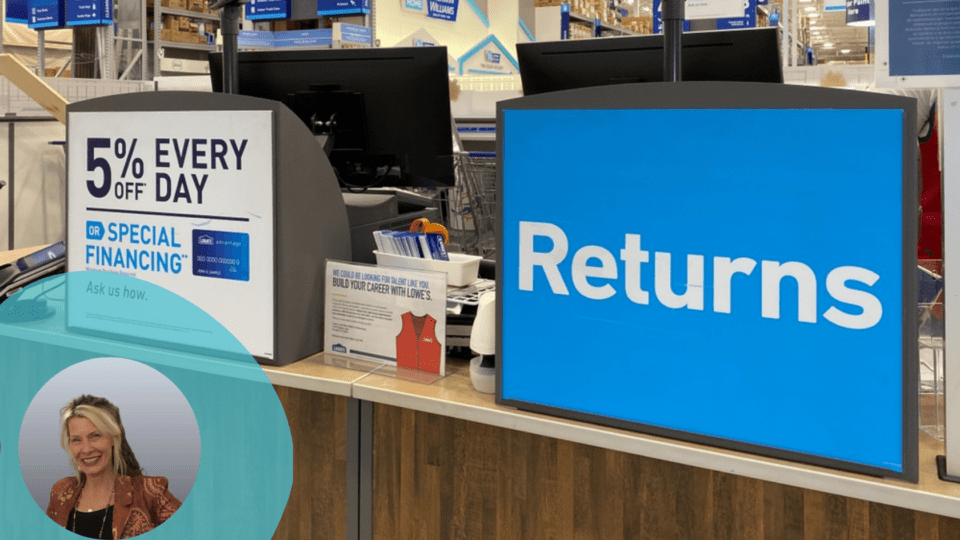Any good business leader knows that ownership is important for productivity. When a department has a clear hierarchy with an understood balance of responsibility, issues that arise are resolved swiftly. For example, if consumers are reporting errors with self-checkout kiosks nationwide, it is expected that the technology team will immediately step in to handle the problem, with oversight from the Chief Technology Officer.
Unfortunately, the swim lanes aren’t always well defined, and when it comes to retail returns, it is often unclear where the responsibility, and ultimately the solution, lies. In most retail organizations, returns are siloed within different teams, including ecommerce, in-store operations or supply chain.
A disjointed approach to retail returns erodes profitability by leaving the company vulnerable to unnecessary loss. In fact, a recent survey conducted by the National Retail Federation and Appriss Retail found that the average retailer incurs $165 million in returns for every $1 billion of merchandise sold. Even more concerning, 10% of returns are fraudulent.
So what can retailers do to mitigate this $165 million problem? Take the initiative to assign an executive-level leader to focus on returns across all retail channels.
Unifying the Omnichannel Approach to Returns
One of the biggest roadblocks to successful returns management is the segregation of data across purchasing channels. With a unified returns strategy under a single leader, a retailer can take an integrated approach to returns, ensuring all data flows freely across the entire organization.
For example, if customers are frequently returning clothing they purchased online, the returns team can flag the issue and then try to determine the reasons. Perhaps there are quality control issues like incomplete product descriptions or inaccurate sizing information that should be addressed by the product team. Or the retailer may simply discover that providing consumers with incentives to return online purchases in-store can actually add incremental sales to offset the revenue loss of the return.
On the other hand, frequent clothing returns by certain customers could be the result of size bracketing or retail fraud. Unifying returns data across channels can help retailers detect individuals who repeatedly commit fraud online and flag them when shopping in-store as well, reducing the effect of recurring offenders.
Identifying Fraudulent Returns Patterns Across the Organization
Under the oversight of a single returns leader, returns data from across all channels of the organization can be aggregated and analyzed to easily detect potential fraudulent returns scenarios and patterns affecting the organization. What’s more, a unified returns management strategy enables retailers to quickly create and implement appropriate mitigation efforts to combat fraudulent returns patterns, including:
- Price arbitrage: When a customer buys at a discount and returns the product for a full price refund.
- Order claims: When a customer places an order and claims that the product arrived late, did not arrive, was damaged or was stolen.
- Wardrobing: When a customer repeatedly places orders, uses the products once and returns them all.
- Store credit laundering: When a customer uses a combination of gift cards and store credit to purchase items and credits the return to a credit/debit card.
What’s more, some customers will use multiple accounts to avoid detection. These patterns can be difficult to identify unless omnichannel data is looked at as a whole. When a specialized business unit is tasked with critically reviewing returns, these patterns become clear and mitigation opportunities arise.
Investing In Stopping Returns Fraud Forever
Identifying and mitigating returns is a tall order, but retailers can rely on artificial intelligence (AI)- and machine learning (ML)-based technologies to assist their returns teams. These tools can connect the dots across channels and automatically alert the team to anomalies that imply a higher risk of fraud or theft. Once alerted, the team can investigate the issue without bias and determine whether the return should be approved or declined, or if the shopper should be warned about a change in the retailer’s return policy for future returns. Using AI- and ML-powered solutions to highlight fraud and recommend an action reduces the pressure on customer-facing employees and decreases operational costs for the retailer.
Building a Team of Omnichannel Experts
A C-level returns executive might be a new concept, but its importance is clear. Returns are costly, and retailers cannot ever afford to waste profits on unnecessary or fraudulent returns, especially during economic uncertainty. To identify and stop profit-reducing patterns, retailers must elevate the returns challenge to the top of the organization and invest in data and tools to take an intentional, omnichannel approach to managing returns.
Amy Wilson is the Chief Product Officer for Appriss Retail. She has an extensive background in data and analytics and is a forward thinker with a flair for innovation. Wilson has the scale and executive experience of a true product strategist and leader and has helped pivot a product strategy from a customer-reactive approach to a SaaS-driven revenue model. She also brings solid B2B experience in personalization services for online retailers, digital advertising services, audience engagement products, ecommerce martech and predictive analytics. Prior to joining Appriss, Wilson served as SVP Product Management for Planalytics, where she built the product function from scratch and helped the company determine its user story and scalable product market fit.




